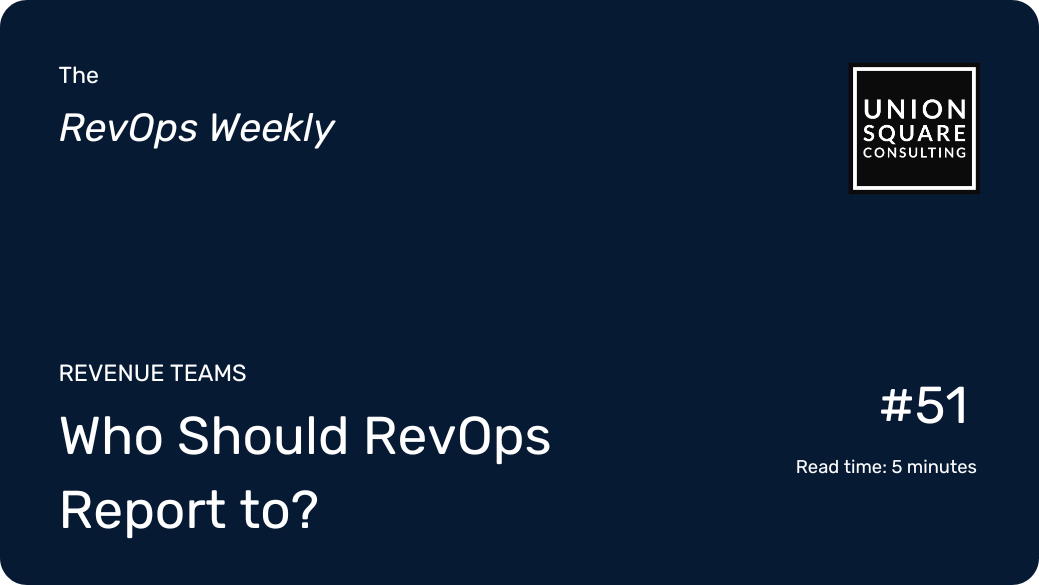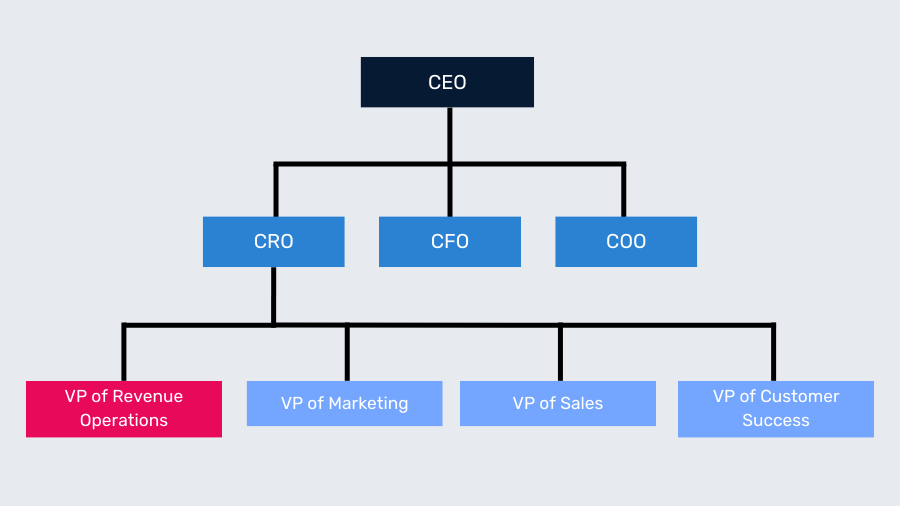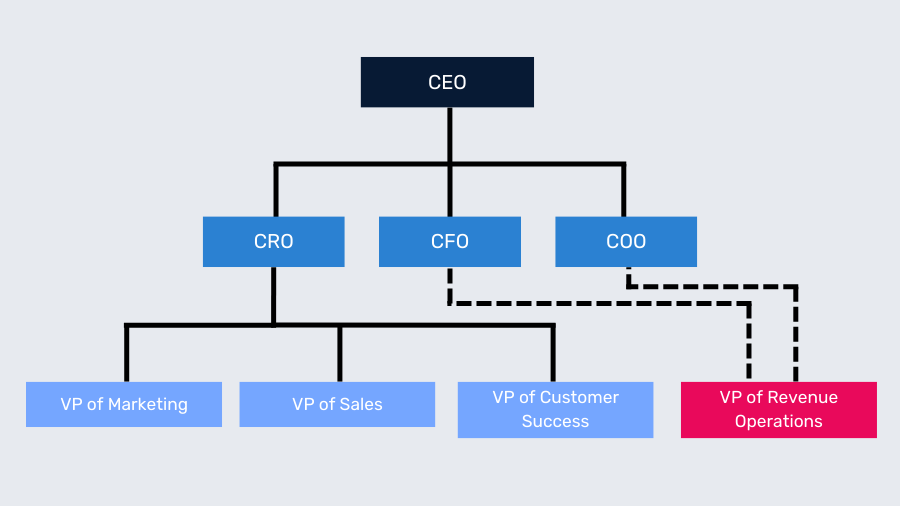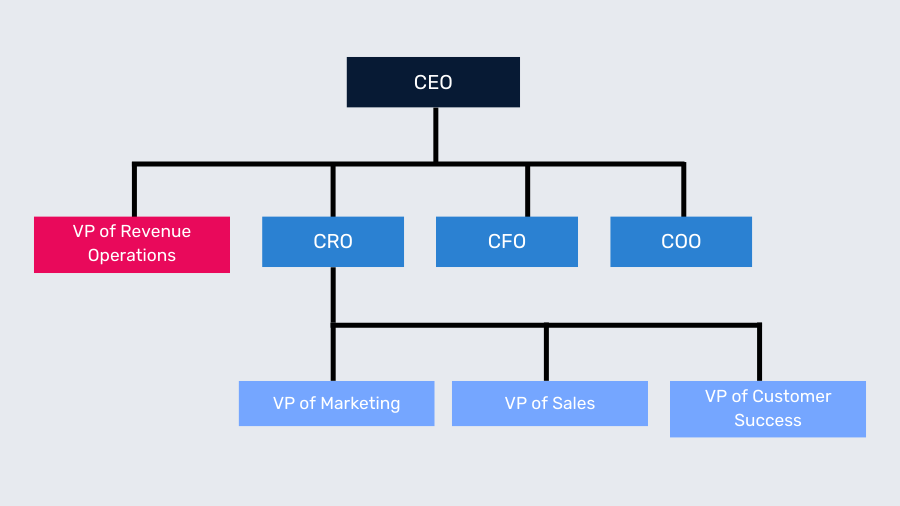
Who Should RevOps Report To?
Read time: 5 minutesExec Summary
- Everyone wants control of the data
- Which makes RevOps a hot commodity
- Reporting lines determine effectiveness
- Wherever RevOps reports to, it must be:
- Unbiased
- Authoritative
- Aligned to revenue functions
- There are many sides to the debate
- Under CRO: Seems logical if CRO owns revenue functions
- However, there’s a potential for sales bias
- Under COO/CFO: RevOps can support every department
- Helpful for PLG
- However, RevOps loses influence in other areas
- Under CEO: The most unbiased and influential position
- Popular among businesses without a COO
- However, CEO might not have enough bandwidth
Everyone wants a piece of RevOps. Even before Revenue Operations was crowned “the fastest growing job” in 2023, control of the department has been routinely fought over.
There are some good reasons for the debate:
- Many execs want control of the data
- By nature, it has connections to disparate departments
- Revenue teams want to ensure proper distribution of resources
Here’s where we stand:
It doesn’t matter where RevOps sits in the org chart as long as they have a seat at the table.
RevOps needs to be:
- Unbiased
- In a position of authority
- Aligned with all revenue functions
Here at USC, we’ve seen RevOps function under many different org structures. As long as they met the above three criteria, they could be successful.
We might have the luxury of fence-sitting, but every company must decide for themselves where RevOps reports. Here are the different perspectives we’ve seen and our take on them.
RevOps Reporting to the CRO
Reporting to the CRO or head of sales is often viewed as the default choice for positioning RevOps in the organization. Many RevOps teams start in the sales organization (typically sales operations), so it’s a logical progression.
Here’s the reasoning we’ve seen behind this argument:
- One executive can be in charge of all go-to-market departments
- This puts RevOps in a good position to support all of those teams
- Embedded in the revenue team, RevOps can have the ultimate empathy for their needs
- If the CRO owns “all revenue”, they also need to “own” RevOps in order to execute plans
Counterargument:
- CROs may have a strong sales bias, treating RevOps as Sales Ops

RevOps Reporting to the CFO or COO
Financial models with product-led growth and usage components are all the rage. Why? Because they align cost with value more directly, leading to faster ARR growth.
In these businesses, all departments contribute to revenue. Which means RevOps should be supporting them all – not just sales, marketing, and CS.
This has led to a growing trend in companies centralizing RevOps with the CFO or COO.
Here’s the reasoning:
- Close ties with financial analysts reduce the need for a large analyst team
- Centralization ensures objectivity, allowing pushback on non-best practices
- The second-in-command of RevOps can serve as a fractional chief of staff to the CRO
- Keeping RevOps under the CRO might neglect other revenue teams, such as support and billing
- RevOps can bridge finance and the revenue department, aiding in long-term planning, profitability work, and other modeling
Counterargument:
- RevOps can’t properly defend reasonable quotas, sales compensation, and other go-to-market interests if they answer to the financial head of the company

RevOps Reporting to the CEO
Positioning RevOps directly under the CEO is another option – one with passionate defenders. This approach is usually used by companies that put serious weight into the strategic importance of RevOps and who don’t have a COO.
Here’s the reasoning:
- It’s easier for RevOps to influence decisions and enforce processes
- Reporting to the CEO gives RevOps a comprehensive view of operations
- Free of bias, RevOps is able to make >RevOps is in the best position to improve communication and visibility between departments
Counterargument:
- The CEO may not have enough bandwidth to provide the oversight RevOps needs
- There might be a lack of more specialized insight that another CXO could provide

Comparison at a Glance
To summarize, let’s look at the reasons we might choose one org structure over another:
Reporting to CRO: If the CRO already owns all other go-to-market functions, this puts RevOps in a great position to provide support across departments. (Beware a strong sales bias!)
Reporting to the CFO/COO: The PLG business model means every department is a part of the revenue team. Centralizing under the CFO or COO in this case ensures objectivity and a wider purview.
Reporting to the CEO: This structure gives RevOps the most authority, oversight, and objectivity, making it favorable among businesses without a COO.
Each structure has its benefits and challenges, making it crucial for companies to decide based on their unique needs. Remember that your reporting lines determine whether a department can carry out its functions effectively, so choose wisely!
When you’re ready, here’s how we can help:
Get a Free 1:1 Revenue Efficiency Workshop
Get one of our Senior Revenue Strategists to yourself for 1 hour and leave with a plan to increase the money-making power of your go-to-market operations.
Hire Us!
Bring us on as your Strategic RevOps Team and realize the growth potential of your revenue engine. There are 3 ways to work with us.
Get more tips like these, sent right to your inbox.
Subscribe for fresh, relevant revenue growth tips delivered every week.
